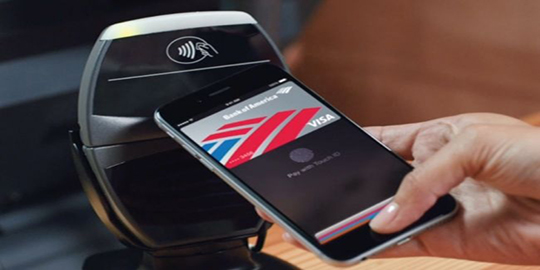
Technology Observatory September 8–14
This week's Technology Observatory brings you the following stories:
● Wayra launches a new call to speed up start-ups in Latin America and Europe
● The Samsung Gear VR to retail at $199
● Twitter officially introduces the "Buy" button
● Pepephone switches to the Movistar network
● Presenting the iPhone 6
● iOS 8 to be available from September 17
● A new mobile payment scheme: Apple Pay
● Apple Watch, the company's "most personal" device, now official
● Microsoft to drop the Nokia and Windows Phone brands
● HTC geared up for October 8 unveiling of device with a standout camera
Wayra, the international start-up accelerator promoted by Telefónica, has announced a new call for projects in its search for novel business proposals. This time there are places in as many as eight countries: Spain, Germany and the United Kingdom in Europe, and Argentina, Chile, Peru, Mexico and Venezuela in Latin America. Entrepreneurs with technology-based start-ups in the early stages of development have until next October 5 to submit their proposals to the Wayra website and apply for a place at one of the academies in Europe or Latin America. The projects that Wayra decides to accelerate all share one thing in common: they use the advantages offered by the Internet and new technologies to innovate, irrespective of the sector or industry. This latest call will place particular emphasis on projects or companies that provide services for SMEs and B2B brands in some of the following areas:
● Cloud services and solutions for managing and optimizing their infrastructures
● Services based on machine-to-machine (M2M) technology, including new devices that harness the benefits of mobility and connectivity
● Cybersecurity and projects related to emergency networks and services
However, there will also be room for applications and services for the public at large that improve communications between people and enrich their digital environment by integrating their devices, leisure in the home, security, family supervision and other aspects. Following an exhaustive selection process during which a panel of experts assesses their characteristics and potential, the best projects will participate in the acceleration program, gaining access to funding, dedicated mentors, specialist training and advice, office space for their team at the Wayra Academy, and potential access to the Telefónica Group business lines. Launched three years ago, Wayra has already built up a portfolio of more than 340 companies all up and running, grouped around more than 20 digital industries. Telefónica has committed 14.3 million euros to the start-ups accelerated by Wayra, and invested more than 43 million euros in third parties (public and private funds and business angels).
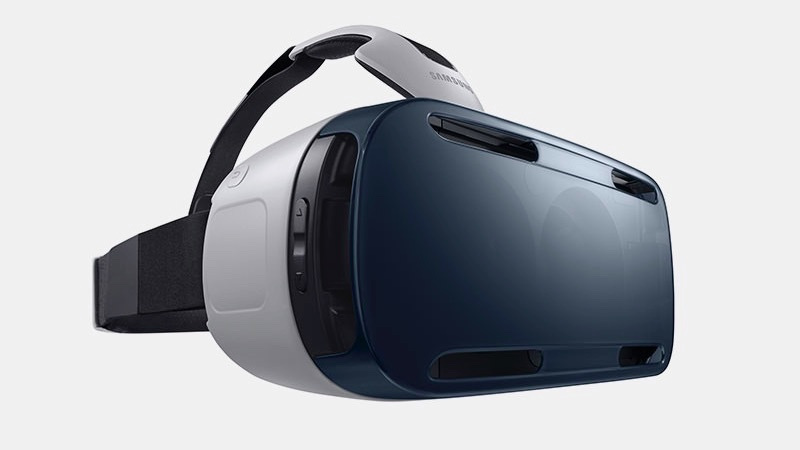
One of the successes at the recent edition of IFA was undoubtedly the Samsung Gear VR. The headset adapter from the South Korean firm has caused quite a stir, especially among video game enthusiasts. With practically limitless capabilities, there was nevertheless one question – unanswered – on everyone's lips at the fair: what will it cost? Today we finally got an answer: $199. According to a report in Venture Beat, a Samsung spokesperson confirmed this price at the New York fashion week to one of the publication's reporters. A somewhat bizarre time and place to announce something like that, and in any case that's the retail price on the American market. Can we expect the same in the rest of the world? Possibly. After all, the Samsung Gear VR only works with a Galaxy Note 4, so if confirmed this information would place the price of the pack at around $1,000. That's clearly quite a high price tag, especially when you think that the Oculus Rift comes in at around $350. And remember, this new device uses the capabilities of Samsung's phablet, which makes it the perfect combo for toting around everywhere you go. Whatever the case might be, we're still waiting for official confirmation of this information, but in the meantime it opens up a very interesting debate: what price would tempt consumers to try out virtual reality and what price would put them off? The target audience for the Samsung Galaxy Note 4 may well be offered the chance to obtain a novel accessory at an affordable price and get hold of a technology that promises to be the future. The question is, will they take up the opportunity?
Twitter has officially announced the introduction of the "Buy" button. For the moment it's reserved exclusively for certain U.S. celebrities. Like Newsletters and images, it's very easy to use: the "Buy" button appears under your tweets next to an image of the article. Twitter has clearly set its sights on becoming a major payment platform and gaining extra revenue from something other than advertising. Although an interesting business model, it's nevertheless quite dangerous as the spontaneity of Twitter will encourage impulse buying, which is something that users should be aware of. On the other hand, the nature of Twitter could create a new ecosystem of micropayments, and that's something lots of businesses would welcome. Geolocalization and micro-donations are just two things that spring to mind. So the microblogging service has joined Facebook, Google and Amazon as a payment platform. Will it be successful? For the moment, only a handful of VIPs can actually try it out, but it has arrived.
The bomb went off on Tuesday night. After being kept waiting for more than six months, Pepephone decided to cut its losses with Yoigo and take its network – including the much-coveted 4G network – directly to Movistar. The reasons are obvious: the possible deal with Yoigo was more than six months behind schedule and it didn't look like the obstacles were going to be removed any time soon, especially after Yoigo announced that it might turn to Europe.
But today we can confirm Pepephone's deal with Movistar. In a statement to Europa Press, its CEO Pedro Serrahima confirmed that today the company would be sealing an agreement to provide its customers with Movistar coverage starting this December. He also complained about having been treated "like a rag doll" over the last few months.
Serrahima's first statements after news broke about the company's change of plans were categorical. Pedro described how Pepephone had been caught up in a battle between Yoigo and Movistar that had little to do with his company but had nevertheless damaged its interests. What happened was this. After signing an agreement with Yoigo to use its coverage, Movistar refused to lend its network to cover the gaps left by the former's coverage. The debacle has finally ended with Pepephone taking the more direct route, i.e. ditching Yoigo and doing a direct deal with Movistar. According to Serrahima, they had agreed a series of timeframes with this operator which haven't been met as Yoigo has neither the coverage nor the platform necessary to host the polka-dot virtual or any other virtual for that matter. Which is why the Pepephone CEO has confirmed the speculated timeframe for its switch to Movistar, in the hope that the migration of the Vodafone network to the Movistar network will be completed by December. This will come neither easily nor cheaply as the SIM cards for the operator's current 465,000 lines will have to be changed, and paid for by the company. But at least it puts an end to the uncertainty that has surrounded Pepephone in recent months, a situation which last August led to the company losing lines through portability for the first time in its history. Now all that's needed is for the migration to take place and see which way other virtuals choose to go, and in fact all the other operators with their own network that currently don't lend their 4G to any other company.
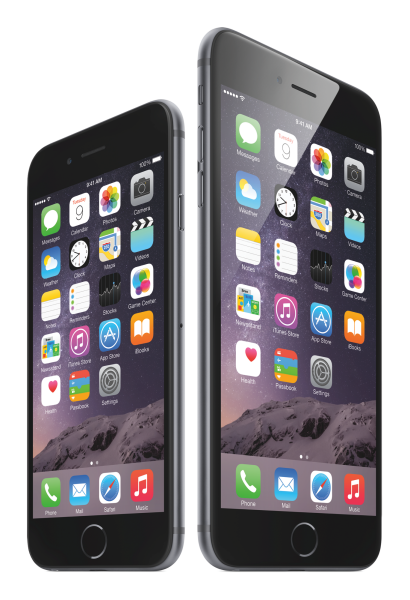
After months of rumors, the new iPhone 6 is finally official. Two sizes for two names: 4.7 inches the iPhone 6 and 5.5 inches the iPhone 6 Plus. The models are exactly the same as the ones that had been leaked. Here are the specs:
Display
● 4.7-inch display, resolution 1334x470 pixels (1920x1080 in the case of the 5.5-inch model). That's 38% more pixels than the iPhone 5.
● New technology for the display, called Retina HD.
● 6.8 mm thick, compared with the 7.6 mm of the iPhone 5s)
Performance and battery life
● Apple 8 as the new processor, also 64-bit but with some spectacular 20nm transistors, and a chip that's 13% smaller than the A7.
● The A8 is 20% faster and has 50% more graphics power.
● 50 hours of battery life in audio, 11 in video, 11 with Wi-Fi navigation, 10 with LTE and 10 with 3G. 10 hours of life as well in conversation mode under 3G, thanks to FaceTime Audio.
● Barometer.
Camera and NFC
● 8-megapixel camera with the same autofocus flash (embedded in a single orifice) and a new sensor with an f/2.2 aperture. The autofocus functions at double the speed of that of the iPhone 5s. Panoramas with up to 43 megapixels, and the 5.5-inch model – though not the 4.7-inch version – has an optical image stabilization capability.
● Slow-motion video recording at 120 fps or even 240 fps.
● Burst selfies for the front-facing camera. HDR photos with a single click of the shutter, minimizing clarity and image resolution.
● The 32 GB storage has been replaced by 16, 64 and 128 GB. Prices start at $199 on contract for 16 GB, rising to $399 for the 128 GB version.
● NFC to use with Apple Pay, the new payment system.
Although many of us didn't expect any significant differences in the hardware of the two products (as in the case of the iPad Mini Retina and the iPad Air), it turns out that the iPhone 6 Plus has an optical image stabilizer (OIS) compared with digital stabilization in the iPhone 6. For the rest – aside from resolution, display size and battery life – they're identical. As just revealed on the Apple website, the new iPhone 6 and iPhone 6 Plus now have an arrival-in-Spain date: September 26. That's just one week after the first round, which will start in countries like the United States and United Kingdom. The retail prices in Spain, depending on whether you want 16, 64 or 128 GB of storage, are:
● iPhone 6: €699 / €799 / €899
● iPhone 6 Plus: €799 / €899 / €999
During the September 9 keynote, the Cupertino colossus also finally announced the rollout date of the new operating system that will run in all of its mobile devices: iOS8. Presented at the WWDC, this latest iOS version will reach all compatible devices on September 17, and of course will already be installed in the new iPhone generation. These are the devices that will update to iOS 8:
● iPhone 4s, iPhone 5, iPhone 5c, iPhone 5s
● iPod Touch (fifth generation)
● iPad 2, iPad (third generation), iPad Air
● iPad mini, iPad mini Retina
So, as from September 17 stay alert to the arrival of the next major update of Apple's mobile operating system, which will incorporate a plethora of novelties like the new notification center and revamped mail application as well as the possibility of using third-party keyboards.
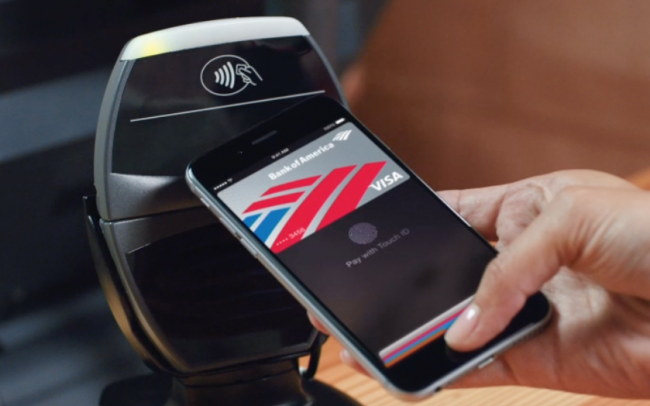
Another rumor confirmed: the payment platform for Apple mobile devices that use NFC and Touch ID. Called Apple Pay, it works like any debit or credit card, including the one you've already associated with your Apple ID. You can add new cards by photographing them with your iPhone camera. The system uses NFC for contactless payments and Touch ID for security confirmation. Apple has teamed up with companies like Uber, Groupon, Nike, McDonald's, Disney, Sephora, Toys'R'Us, Petco and Subway to promote the use of Apple Pay. These agreements will initially go live in the U.S. but between the final quarter of this year and the end of 2015 Apple Pay is expected to operate in more than 150 countries. Apple Pay will also work with Apple Watch, although it remains to be seen whether it will fare better than existing solutions in consolidating the use of NFC technology.
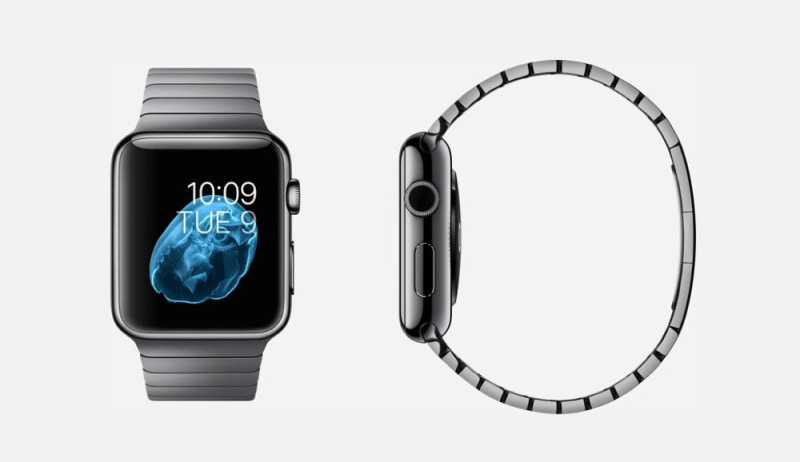
The rumors had been around for years, but they'd become stronger in recent weeks with sources like Re/code behind them. Now the prophesy has come true: Apple has unveiled its first wearable (of this era, at least). Thus begins the giant white apple's incursion into a young market increasingly populated by interesting if peculiar proposals, and which Apple has joined by offering a product that will work in unison with its much-admired smartphones. The new Apple Watch was announced with the legendary words "One more thing...", which Steve Jobs used so many time to take us all by surprise. According to Tim Cook, they hope the new product will "redefine what people expect from the category", i.e. from smartwatches. Apple Watch will be available in silver and gold with interchangeable straps, but more than a watch it's a new way of interacting and communicating with a device, as Tim Cook pointed out at the event. However, the most revolutionary thing about this wrist device is how it takes the iPhone's user interface and experience and transports it to the display of a smartwatch, something that its competitors have yet to achieve, and bearing in mind how user-friendly the Apple smartphone UI is, we can expect the same of the Apple Watch. The interface of Apple's first wearable is just as intuitive as and looks so much like the iPhone interface that you can even do basic things like "pinch to zoom" on the Maps application in exactly the same way you would on an iPhone or iPad. Besides, it's also a device dedicated to the user's health as it counts your steps and measures and tracks your physical activities, heart rate and more, in conjunction with the HealthKit built into iOS 8. The design is stunning, there’s no other word for it. Though undoubtedly reminiscent of the iPod Nano, it has its own personality and style, with curved edges like the new iPhone 6, and one side has a flat button and a knob like the winder on a traditional watch (which they've called a "digital crown"), that turns and can be depressed and contains special functions for using the interface. Naturally, some of the most important iOS features are also present in the Apple Watch, like Siri, which means you can make inquiries, ask questions and give voice commands and see the answer displayed on this sumptuous smartwatch.
Selected features of the Apple Watch
● Sapphire touchscreen display
● Gyroscope, accelerometer
● Four sensors on the rear face to measure health data
● Available in two sizes
And, naturally, the Apple Watch will have its own applications and SDK. Developers will be able to give any new capability they can come up with to Apple's first smartwatch, which in turn is designed to work hand in hand with an iPhone. Health apps, GPS for marathons and sports enthusiasts, message and mail notifications, the ability to control the music you listen to, send short messages, look at photos or contact information... and the time, of course, are just some of the basic functions built into this striking new smartwatch. For the rest, and as always, it will be up to the developers to get creative with the new uses they want to give to the Apple Watch. Prices start at $349 and it will be available in early 2015. For use with iPhone 5, 5c, 5s, 6 and 6 Plus.
As part of its new strategy to – finally – make its own smartphones, following its acquisition of Nokia, Microsoft now has to forge ahead with the next crucial but somewhat controversial step: completely revamping its brand and identity. So, as revealed by GeeksOnGadgets, which has managed to get hold of an internal Microsoft document, Nokia is to be killed off. Microsoft will drop both the Nokia and Windows Phone brands, and the operating system for the company's mobile devices will be known simply as Windows, in line with its plans to unify all of its products and services. A single ecosystem. A single Windows. In September 2013 we were all surprised at the news of Microsoft's acquisition of Nokia as the two companies had been working very closely together to equip the spectacular Lumia terminals and Windows Phone to compete with their two giant rivals, iPhone and Android. The purchase was finalized in April this year, and the writing's been on the wall ever since: sooner or later, Nokia would have to go. This is completely understandable: still led by Steve Ballmer at the time, Microsoft only bought Nokia's mobile division, not the whole company (some divisions still operate independently in Finland), so escaping from the brand and growing on its own was only a matter of time. The Microsoft smartphone brand will simply be called Lumia. What really has taken us by the surprise is the demise of the Windows Phone brand. Since Satya Nadella took over as Microsoft CEO, he's made a point of emphasizing the company's focus on creating a single ecosystem, a single platform (to a certain extent) for all of its products. The Windows, Windows Phone and Xbox One interfaces already bear an incredible and very deliberate resemblance, so now it's a question of honing the brand. Simplifying everything to "Windows" not only makes it easier for the public but ensures that we're talking about the same ecosystem, the same product in different presentations. It's a good strategy. According to GeeksOnGadgets, we'll see the first "Lumia phones with Windows" and say our last farewell to Nokia smartphones by Christmas.

Just when things seemed to be quietening down on the mobile device front, they go and chalk up some new dates on the calendar. On this occasion it's HTC and an event planned for October 8. The Taiwanese firm has started sending out invitations to the media. If the IFA seemed a little bland as regards HTC, with 64-bit Android models HTC Desire 510 and 820 as the flagships, and if the Windows Phone version of the HTC One M8 isn't enough for you, there will be some important novelties emerging in a less than a month's time. The event seems to be related to a phone with a standout camera, at least if the wording on the invite – "Double Exposure" – is anything to go by. The picture used shows two women who look like they're taking a selfie with an HTC One M8. The event will take place in New York and we don't think it's going to have anything to do with Google or Nexus products. Although there is a latent rumor about the Nexus 9 tablet made by them, and Nvidia, and some fairly hard evidence has emerged in recent days.
